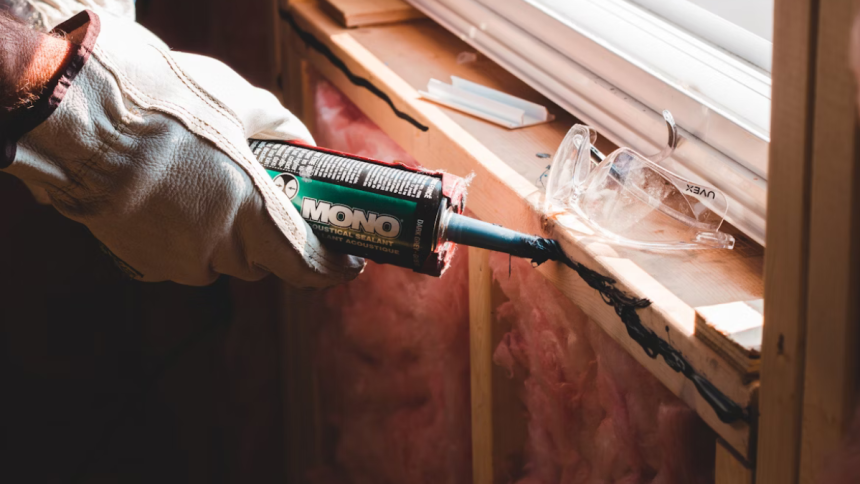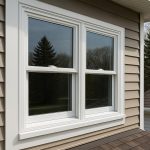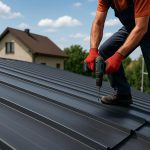You patch a leak, wipe a ceiling stain, admire the aesthetic beauty of your home, and move on. The next time, the same problem returns but in a much worse form. That’s the trap of ignoring subtle but critical home maintenance tasks.
Did you know that American homeowners spent over $30 billion on roof-related claims alone in 2024? It’s just one stat highlighting how seemingly insignificant oversights can lead to massive expenses.
This article will uncover four commonly overlooked maintenance moves that slowly undermine a home’s appearance and value. The difference between manageable upkeep and long-term regret may lie in avoiding these pitfalls. Let’s break them down before they break your budget.
Skipping Annual Roof Flashing Inspection
When you think of a roof inspection, do shingles or any visible damage first come to mind? You’re not alone because many homeowners neglect the flashing used around chimneys, skylights, and vent pipes.
Made of metals like aluminum, copper, or galvanized steel, flashing prevents water from sneaking into the narrow openings. When the flashing cracks, lifts off, or corrodes, it makes way for leakages.
Consider a place like Knoxville, Tennessee. This city is known to experience spring rain and humid summers. In 2024, the precipitation levels and temperature were expected to be ‘above average.’ This was simply a part of a broader extreme in weather conditions that most of the continental US has been facing.
Heavy rain, coupled with high temperatures, can wear down flashing pretty quickly. In short, it only increases the risk of roof leaks. If it reaches this point, serious consequences are around the corner. Think of structural issues, mold/mildew growth, electrical hazards, and high repair costs.
What to do:
- Schedule a professional inspection at least once a year, ideally before the monsoon.
- Ask the contractor to specifically check the roof flashing.
- Request pictures or a brief report from the roofer to document any damages or vulnerable areas.
- Address minor flashing issues immediately, no matter how small they seem.
Neglecting Gutter Cleaning and Drainage Adjustments
It’s difficult to understand the importance of a proper gutter and drainage system until things go south. Gutters are your home’s first line of defense against rain. Neglecting their cleaning and upkeep can cause a chain of issues: damaged siding, foundational weakness, and ruined landscaping.
Piling up of leaves, twigs, and debris causes water to spill over instead of flowing through. This erodes the soil near the home’s foundation, creates leakages in basements, and loosens shingles. According to SureFlow Gutters, LLC, the following warning signs of gutter damage should not be ignored:
- Sagging or pulling away from the roofline
- Surrounding wood beginning to rot
- Leakages or water not being redirected properly
Homeowners in some areas need to be more vigilant than others. For instance, those in Easley, South Carolina, experience a humid subtropical climate. June is the wettest month, with precipitation levels going as high as 46%. The combination of moisture and heat during this period often accelerates leaf decay and gutter clogging, especially around tree-lined yards.
Such recurring weather patterns in Easley make it essential to stay ahead of gutter maintenance. Many homeowners even seek Easley SC gutter services to prevent minor issues from escalating.
What to do:
- Have the gutters cleaned at least twice a year.
- Install gutter guards to reduce debris buildup in case trees overhang your home’s roof.
- Extend downspouts 4-6 feet away from the foundation to ensure proper runoff.
- Inspect after storms for leaks and sagging sections.
- Consult with professionals for advanced interventions like drainage optimization or realignment.
Forgetting to Seal Exterior Wood Surfaces
Most modern homes include several structures and features made of wood. These structures are even found in the exterior of the home: decks, pergolas, and fences. They add both curb appeal and value, but must not be left unsealed.
Exposed wood, especially when outside, tends to deteriorate rapidly due to UV rays, rain, humidity, and temperature shifts. This means proper and timely sealing is needed to prevent rot, cracks, and discoloration.
Take the city of Buffalo, New York, as an example. Ranked among the top wettest cities in the US, it receives nearly 40.48 inches of rainfall for over 160 days in a year. Given the moisture in the air, homeowners with untreated wooden decks notice signs of decay just within a year.
The situation can get even worse when water seeps into the unsealed grain and freezes overnight during cold spells. This isn’t just about aesthetics; mold/mildew can grow quickly on damp wood, thereby creating safety hazards or damaging adjacent structures.
Moreover, the wood decks market in the US is growing at a rate of 5.4% till 2033. With wood being such a widely used decking material, Americans are depending on a surface that requires sealing and care to stay intact and beautiful.
What to do:
- Clean exterior wood surfaces at least once a year.
- Apply a water-repellent sealant or stain, especially during the rainy season.
- Inspect for soft spots, mildew, or discoloration that indicate early rot.
- Consider installing awnings or pergolas to reduce direct exposure to rain.
Ignoring Crawl Space or Attic Ventilation
Perhaps one of the least visited spaces of a home is the crawl space or attic. They tend to be treated as ‘out of sight, out of mind’ spaces until major problems arise. Ventilation is among the first things that get neglected, which quietly damages the home from within.
Insufficient airflow leads to moisture accumulation, especially during humid and rainy climates. This contributes to mold, mildew, and structural wood rot. Trapped heat in attics can prematurely age roof shingles. As for crawlspaces, they can compromise insulation.
Let’s consider the city of Charleston in South Carolina, where rainfall has crushed its 126-year record in 2025. With levels of precipitation as high as 1.99 inches in a single night, the humidity involved in the aftermath can easily exceed 70%. If homeowners simply cover their crawl space vents, they may be surprised to find warped floorboards and mold.
It mainly happens due to a lack of cross-ventilation, which leads to the steady formation of condensation. Serious damage can occur within a single humidity season. The remediation may involve thousands of dollars, depending on the extent of damage.
The key is to ensure such spaces are equipped with proper ventilation systems. This will control excess humidity and prevent the buildup of mold.
What to do:
- Inspect attic and crawl space vents once a year for blockages from pests or dust.
- Ensure unobstructed airflow by checking the vents thoroughly.
- Install vapor barriers and dehumidifiers to reduce moisture buildup.
- Watch for early signs of ventilation issues like musty odors and persistent high humidity levels.
The true cost of homeownership includes routine maintenance, but should ideally not require extensive repairs. This can seem overwhelming, as 27% homeowners in a recent survey confessed. It’s not just about the cost, but also the emotional burden of surprise breakdowns, not knowing what’s at risk.
The good news is that being proactive about maintenance can take the burden off your shoulders. Small, consistent actions will help you stay in control, turning homeownership from a source of stress to a point of confidence.
Start by not ignoring the four maintenance moves we have discussed in this article. Smart choices today will not only preserve your property but also offer you long-term peace of mind.
Lynn Martelli is an editor at Readability. She received her MFA in Creative Writing from Antioch University and has worked as an editor for over 10 years. Lynn has edited a wide variety of books, including fiction, non-fiction, memoirs, and more. In her free time, Lynn enjoys reading, writing, and spending time with her family and friends.















